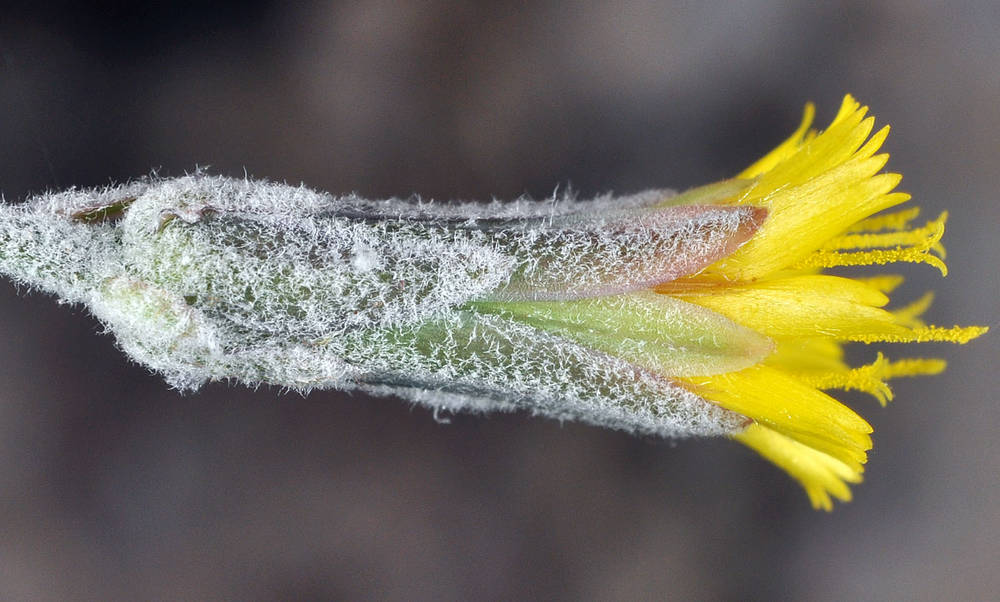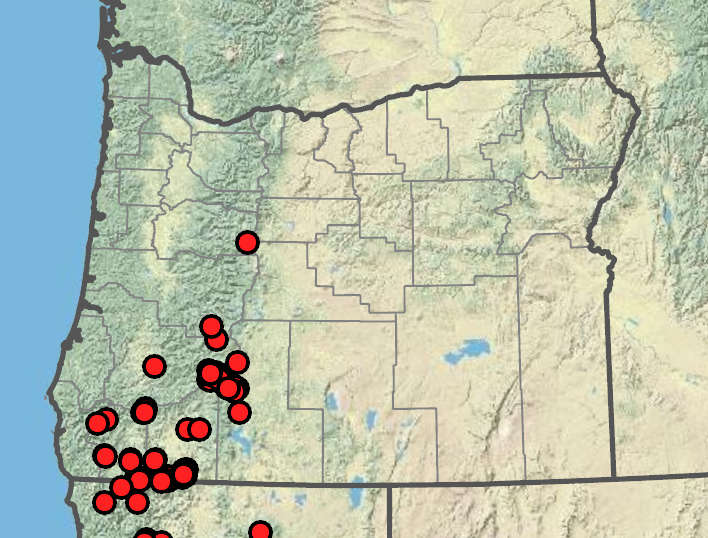Hieracium longipilum
Hieracium greenei
Greene's hawkweed
erect; simple or branched, tomentulose, sometimes pilose near base.
basal and sometimes 1 cauline, oblanceolate, 3–15 cm;
margins mostly entire; some usually blunt-toothed;
tips usually acute;
surfaces densely pilose-hispid;
petioles sometimes winged.
panicle-like arrays, bracteate.
cylindric in flower and fruit, 9–12 mm.
5–10+;
ligules 8–10 mm, yellow.
linear-lanceolate;
surfaces lightly to moderately tomentulose; inner 6–10; outer gradually shorter.
columnar, 3–3.5 mm, dark brown.
=18.
Hieracium longipilum
Hieracium greenei
Rocky slopes and outcrops, roadcuts, forest openings. Flowering Jun–Aug. 600–2500 m. Casc, ECas, Sisk. CA. Native.
Occasional specimens are suggestive of hybridization with Hieracium bolanderi. The molecular phylogenetic studies by Gaskin and Wilson (2007) placed H. greenei as the sister taxon to H. parryi.
Kenton Chambers



